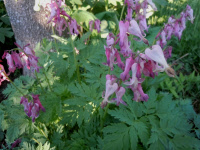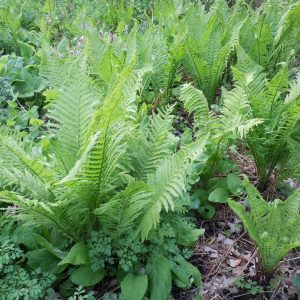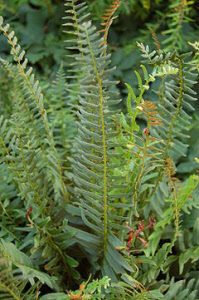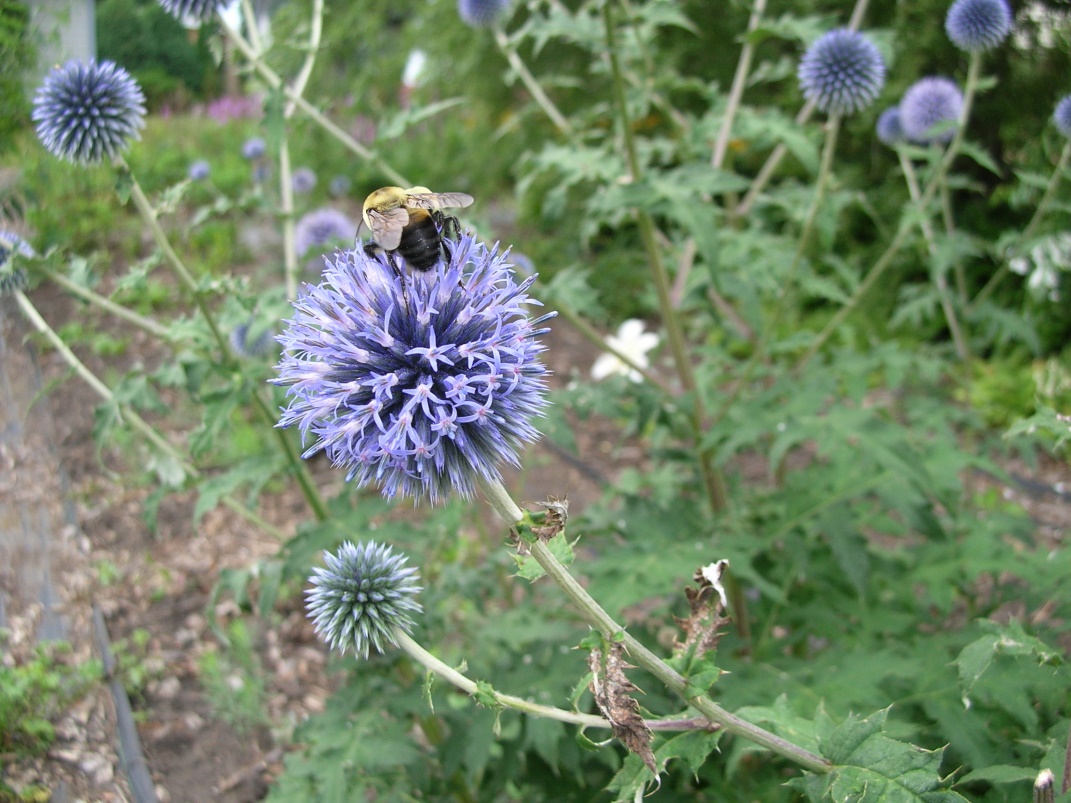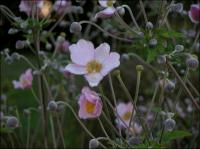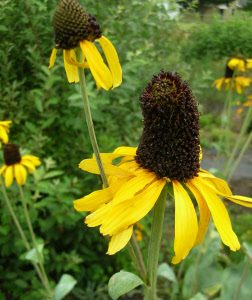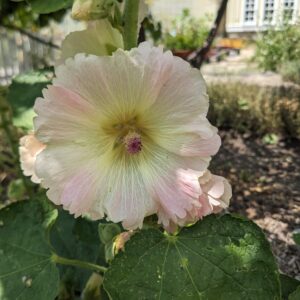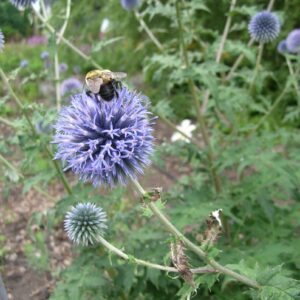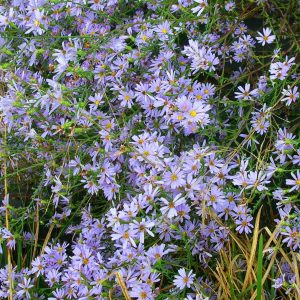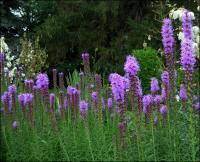…clematis Convallaria majalis Lily-of-the-valley Dandelion & clover (here’s your chance to stop applying weed & feed to the lawn) Dicentra eximia Fern-leaf bleedingheart Dodecatheon meadia Shooting star Euphorbia polychroma Cushion…
More »Search Results for: Lady fern
-
Dicentra eximia syn Lamprocapnos , Fringed bleeding heart Z 4-8
OUT OF STOCK May to October dangling rose pink heart-shaped panicles among fern-like, grey-green foliage. They appear delicate but are not....
OUT OF STOCK
May to October dangling rose pink heart-shaped panicles among fern-like, grey-green foliage. They appear delicate but are not.
Size: 8” x 8”
Care: Part shade, moist to moist well-drained soil
Native: Mountains from New York to Georgia
Wildlife Value: Nectar source for hummingbirds & White swallowtail butterfly.Dicentra derived from Greek dis meaning two and kentros meaning spurs. Introduced to gardens by Quaker planthunter and nurseryman John Bartram (1699-1777) in mid-1700’s. Recommended by Gertrude Jekyll, mother of mixed perennial borders, in 1908.
**LISTED AS OUT OF STOCK BECAUSE WE DO NOT SHIP THIS ITEM. IT IS AVAILABLE FOR PURCHASE AT OUR RETAIL LOCATION.
-
Osmunda regalis Royal fern Z. 4-10
OUT OF STOCK Lance-shaped double divided leaves. Late summer erect brown tassels form – they are fertile fronds. One of internationally known garden designer Piet Oudolf’s 100 “MUST HAVE” plants,...
OUT OF STOCK
Lance-shaped double divided leaves. Late summer erect brown tassels form – they are fertile fronds. One of internationally known garden designer Piet Oudolf’s 100 “MUST HAVE” plants, Gardens Illustrated 94 (2013)
Size: 4-6’ x 12’
Care: Sun to Light shade, moist, humusy, acidic, fertile soil
Native: Eastern North America
Awards: Great Plant Pick Award from Elisabeth Carey Miller Botanical Garden & England’s Royal Horticultural Society Award of Merit.Osmunda named for Osmunder, a Saxon god. 1st collected by Rev. John Banister who moved to colonial Virginia in 1678. A gunman mistakenly shot and killed him while he collected plants.
-
Polystichum acrostichoides Christmas fern Z 3-10
OUT OF STOCK Leathery, lance-shaped evergreen fronds....
OUT OF STOCK
Leathery, lance-shaped evergreen fronds.
Size: H 18” S 18”
Care: part shade to full shade in most any soil, nearly indestructable
Native: Every state east of the Rockies
Awards: Kentucky's Theodore Klein Plant AwardEvergreen fronds last all winter. Called “Christmas” because in the past florist used the evergreen fronds in holiday arrangements. Collected by Michaux before 1800.
**LISTED AS OUT OF STOCK BECAUSE WE DO NOT SHIP THIS ITEM. IT IS AVAILABLE FOR PURCHASE AT OUR RETAIL LOCATION.
-
Anemone vitifolia ‘Robustissima’ syn. A tomentosa Z 4-8
Pearl-like buds open to single, ballerina- pink umbels in late summer and fall.
Pearl-like buds open to single, ballerina- pink umbels in late summer and fall.
Size: 30"x 36" spreader
Care: Sun to part shade in moist to moist well-drained soil
Native: cultivated variety of A. vitifolia native to Nepal.In 1629 Parkinson extolled the Anemone: “The sight of them doth enforce an earnest longing in the mind of anyone to be a possessour of some of them…” The leaves of the plant were used in ointment made into “cold grieses” was used to “warm and comfort the parts (and) the roote… is apt to drawe downe rheume if it be tasted or chewed.” Paradisi in Sole Paradisus Terrestris. The word Anemone is Sanskrit meaning he breathes. In Greek mythology Anemos, the Wind, uses these flowers to herald his coming in early spring. This species first introduced from its native Nepal to European garden cultivation by Lady Amherst in 1829.
-
Rudbeckia maxima Great coneflower Z 4-9
Magnificent wildflower with huge paddle-shaped leaves of blue-grey-green and tall stalks of finch-gold petals encircling central cones 4-5″ tall....
Magnificent wildflower with huge paddle-shaped leaves of blue-grey-green and tall stalks of finch-gold petals encircling central cones 4-5″ tall.
Size: 5-6' x 2'
Care: Sun in moist to moist well-drained soil
Native: OK, AK, TX & LA
Wildlife Value: Nectar source for larvae of painted Lady butterfly & for large Wood nymph butterfly.Rudbeckia was named by Linnaeus for his University of Upsala professor, Olaf Rudbeck. Rudbeck made the surprising claim “that the Paradise of Scripture was situated somewhere in Sweden.” C.F. Leyel. This species collected by Englishman Thomas Nuttall (1786-1859) in Oklahoma Territory near the Red River in 1816. Nuttall searched much of the No. American continent from New England west to Oregon, the South, Midwest, the Plains, S.E., California & Hawaii, finding thousands of new plants.
-
Alcea rosea Hollyhock BIENNIAL
Early to late summer spikes of single platters – mixed colors. The classic cottage garden flower....
Early to late summer spikes of single platters – mixed colors. The classic cottage garden flower.
Size: 5-8' x 24"
Care: Sun in moist well-drained to well-drained soil. Drought tolerant
Native: West Asia
Wildlife Value: Butterfly plant, host for Painted Lady butterfliesCultivated in China for thousands of years where it symbolized the passing of time. They cooked the leaves for a vegetable and also ate the buds. Transported from Middle East to Europe by the Crusaders and introduced to England by the 1400’s. Culpepper, a 17th century English herbalist, claimed the plant could be used to cure ailments of the “belly, Stone, Reins, Kidneys, Bladder, Coughs, Shortness of Breath, Wheesing, … the King’s Evil,, Kernels, Chin-cough, Wounds, Bruises, Falls. . . (and) Sun-burning.” Both single and double forms grew in England by the time of Parkinson (1629). Parkinson said they came “in many and sundry colours.” John Winthrop Jr. introduced the 1st hollyhock to the New World in the 1630’s.
-
Echinops ritro Globe thistle Z 3-9
Mid to late summer, round, steel blue flower heads at 1st prickly then turning soft and fuzzy. Great cut flower, fresh or dried....
Mid to late summer, round, steel blue flower heads at 1st prickly then turning soft and fuzzy. Great cut flower, fresh or dried.
Size: 3-4' x 18"
Care: Sun in well-drained soil, drought tolerant
Native: Southern Europe
Wildlife Value: attracts American painted lady butterflies, deer resistantThe name Echinops is Greek meaning “like a hedgehog” describing the circular spiny thistles. Introduced to England by 1570. Popular Victorian flower. Cultivated by Washington at Mount Vernon.
-
Aster azureus syn. Symphyotricum oolentangiense var. oolentangiense Sky blue aster Z 3-9
ARCHIVED Note: This is a plant not currently for sale. This is an archive page preserved for informational use. Showy true cornflower-blue daisies in August-October...
ARCHIVED
Note: This is a plant not currently for sale. This is an archive page preserved for informational use.
Showy true cornflower-blue daisies in August-October
Size: 2-3’ x 2’
Care: full sun to part shade in any soil
Native: NY to SD, FL to TX incl. WI
Wildlife Value: Aster species are nectar sources for many butterflies – Checkered white and Checkered skippers, Spring azure, Pearl crescent, Buckeye, Painted lady, Fiery skipper, Sachem, Sleepy orange, Silver-spotted skipper and Monarch.Collected before 1889.
-
Liatris spicata Blazing star, Gayfeather, Button snakeroot Z 3-8
Rosy purple spikes in July and August, a flower arranger’s dream
Rosy purple spikes in July and August, a flower arranger’s dream
Size: 2-3' x 18"
Care: Full sun in moist to well-drained soil.
Native: Eastern and southern U. S., Wisconsin native
Wildlife Value: favorite nectar source for Buckeye butterflies & host for caterpillars of Painted lady, Fritillaries, Skippers, Sulphurs, Coppers & Checkerspot butterflies.Native Americans used roots medicinally for backaches, colic, dropsy and to strengthen a weak heart. The Dakota recognized this as an indication “when the flower is blue-red that corn is good to eat.” Nicollet Diary, August 13, 1838. The dried root reputedly repelled moths from stored clothes. First collected by English naturalist Mark Catesby and cultivated since 1732. Grown at America’s 1st botanic garden, Elgin Botanic Garden 1811.

